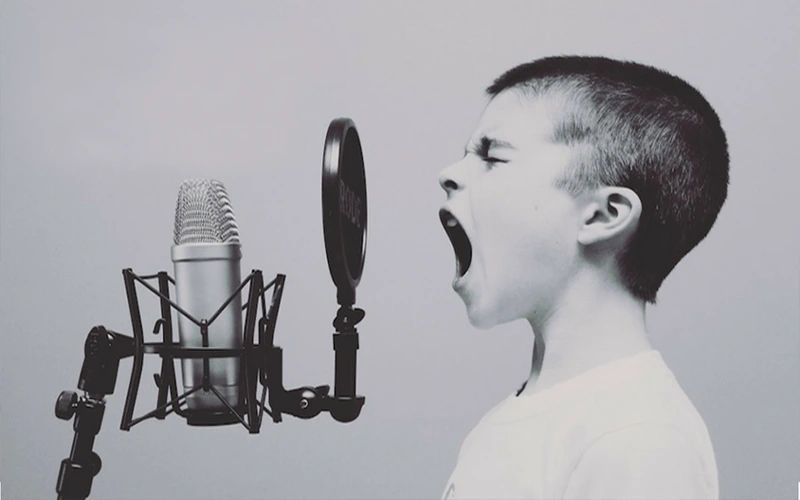Things had gotten so bad at the Bronx veterans hospital that doctors were, in effect, begging their patients to show up as scheduled.
Three years ago, the James J. Peters VA Medical Center began a “Don’t Be A No-Show” campaign, reminding veterans of the importance of keeping appointments.
The campaign explained the detrimental effect on everyone — not just surgeons and clinical staff, but also fellow veterans — when a patient skips an appointment without canceling.
“It means one less patient will see the doctor and it means someone waiting for an appointment was bumped to another day needlessly,” said Bronx VA spokesman James E. Connell III. “It’s not good for the patient, and it’s an inefficient use of clinical resources.”
Such inefficiency, by one account, costs the U.S. health-care system more than $150 billion a year. And while it’s easy to point the finger at the chronic no-shows, a growing body of research suggests clinics themselves are as much to blame because of scheduling and other issues.
The problem is particularly acute at urban hospitals and smaller specialty clinics with low patient volume. While pediatric clinics might see a no-show rate of below 5 percent, urban family clinics often see no-show rates between 10 and 20 percent.
And certain outpatient and surgical clinics — think colonoscopies, endoscopies, pulmonary tests and other procedures that require special prep or diets by the patient — have even higher rates. In a given week, a 50 percent no-show rate — while quite high — isn’t unheard of at some specialty clinics.
“It’s really a flip of a coin whether they show up or not,” said Patricia Alafaireet, director of applied health informatics at the University of Missouri.
Built into the cost of care
That sort of uncertainty might kill off a restaurant, a hair salon, an auto mechanic and pretty much any other appointment-based business model.
Within medicine, it’s all part of the game — and built into the cost of care for the rest of us. Those who skip regular appointments often end up needing more costly emergency care down the road.
“It differs very widely by practice type,” said Kevin Bennett, associate professor at the Department of Family and Preventive Medicine at the University of South Carolina School of Medicine.
The family medicine practice where he works — which is somewhat like a primary care practice, except that as a teaching institution it has regular faculty as well as residents who rotate through infrequently — has a no-show rate that fluctuates from month to month, even from year to year, as is the case with many clinics.
“We’d gotten it down to 10 percent” a few years ago, Mr. Bennett said. Now, it’s up to 15 percent. “In a bad month, it creeps closer to 20.”
That jump, he said, demonstrates the culpability of the clinic in creating — or at least, not fully managing — the no-show problem. After all, it’s not as if the practice’s patient population started forgetting its medical appointments at higher rates for no good reason.
Instead, in the case of the family medicine practice, a switch to a new electronic medical record system — complete with a new appointment system — drove up the rates. “We’re getting operationally back up to speed,” Mr. Bennett said, after a 12- to 15-month “loss of productivity.”
Why does a booking system matter so much? Lots of experts point to poor scheduling as a top culprit in creating no-shows. Some clinics, for example, book appointments on a rolling basis, one open slot after another.
But if you book a patient for an 8:30 a.m. Monday appointment without checking the patient’s preferences, there’s a good chance that appointment will be skipped. And if you schedule a patient’s follow-up appointment for six months down the road or with an unfamiliar physician (which happens often at teaching institutions with young doctors), expect a similar result.
Life’s complications often prevent a patient from showing up in the first place, said Ms. Alafaireet, of the University of Missouri.
It’s not about ‘bad people’
It’s important to get away from assuming that no-shows are bad people or bad patients, she said. “Typically that’s not the case — it’s a set of circumstances,” including a clinic’s scheduling process, the nature of the appointment, the patient’s related health issues, even issues like transit.
She doesn’t like the term “no-show,” either, suggesting it places too much blame at the feet of the patient. The clinical phraseology for a missed appointment is “treatment non-adherence,” while some docs refer to no-shows more casually as “dinks” (as in, “Did Not Keep” the appointment).
Patients most likely to miss appointments are those who are single, under the age of 34, carrying Medicaid insurance (or no insurance at all), as well as older patients recently divorced or widowed. By varying accounts, men and minorities are more likely not to show up, but other studies suggest gender and race have little bearing on no-show rates. (One study said that “racial differences in no-show rates are likely to be proxies for disparities associated with access to a telephone and convenient transportation.”)
And those living far away from the clinic or hospital where their next appointment is scheduled — 60 miles away or more — are a safe no-show bet.
That’s why it’s important to take special care with those populations when it comes to scheduling, experts believe. In analyses done by Ms. Alafaireet and her colleagues, research showed clinic schedulers control as much as one-third of the probability relating to whether a patient will show.
At her Missouri outpatient psychiatric clinic, some fixes were obvious, Ms. Alafaireet said. For example, public transit in the region shuts down early, so it didn’t make sense to schedule Medicaid patients — who are more likely to rely on transit — late in the afternoon.
Other clinics use historical data and predictive modeling to overbook the clinic (a clinic that tries to see 100 patients a day, with a 15 percent no-show rate on Fridays, might schedule 117 patients). Still others try to reserve a window of time each day for walk-ins and short-notice appointments, so that people who missed their visit can make it up quickly.
Follow-up is important, too, especially for far-off appointments. A reminder postcard helps, an automated phone call helps a bit more and a personal phone call a few days before the appointment helps most of all.
A study published in the American Journal of Medicine in 2010 reported that, at a multidiscipline clinic in New Jersey, the no-show rate was 23.1 percent for those who received no reminder, 17.3 percent for those receiving an automated appointment reminder and 13.6 percent if a staff member made a call.
But human calls can be unreliable on the clinic end because on extremely busy days the staff has little time to make them. Robocall services never take a day off, and they cost less.
Generally, studies agree that reminders work better than punitive measures. Charging patients for missed appointments hasn’t proven to be much of a help. Some practices do it to remind patients that their provider’s time is valuable and to make up for a bit of the lost billing revenue.
“Is it really worth it to go after 20 bucks?” asked Brandon Betancourt, practice manager at Salud Pediatrics in suburban Chicago. “In order to really make up for that open slot, you’d have to charge $150 or $200. So what’s the message?”
The message, he noted, may differ from practice to practice. Pediatric clinics are high-volume — each physician at Salud sees 25 to 28 kids a day and the no-show rate is less than 4 percent. But at a specialty surgical clinic, “If you only see four or five patients, and two of them no-show, then that’s a problem.”
Meanwhile, at high-volume clinics, a missed appointment — while it is an opportunity-cost money-loser — gives doctors a chance to catch up on paperwork, check lab results or spend a few extra minutes with patients who have shown up.
Telling a patient: ‘You’re fired’
The most drastic step a clinic can take with a chronic no-show is “firing” the patient. Mr. Bennett, at the University of South Carolina School of Medicine, said his practice dismisses a few patients each year, and Mr. Betancourt said the same.
But that’s a short-term fix, Ms. Alafaireet said.
“The issue with firing a patient [is] that patient doesn’t go away. They just show up later, some place in the health care continuum, and the condition is more acute,” she said.
Focusing efforts on populations more likely to miss appointments makes sense, something the Highmark Foundation in Pittsburgh is doing as it teams with Accenture, a global management and outsourcing consultancy, to build “patient navigation” pilot programs at St. Vincent Health System in Erie and Allegheny Valley Hospital Natrona Heights.
The program trains community members to connect with patients in high-risk communities, guiding them through the health care labyrinth, educating them, preparing them for procedures, even arranging transportation.
“The heart of this is really about enabling access,” said Jean-Pierre Stephan, director of Accenture’s health consumer and services strategy unit in Pittsburgh. “The underserved have barriers to access that typically aren’t dealt with” in the traditional health care model.
The field of patient navigation is about much more than minimizing no-show rates, but that’s among the intended byproducts. One goal is getting patients to show up at their primary care appointments and screenings in the first place because doing that decreases inpatient hospital admissions and emergency room visits, according to Accenture.
Part of the goal, too, is to recruit new patients. While the navigation services are pro bono (and will be paid for using a $254,500 grant from the Highmark Foundation), the new patients — and, in theory, the reduced no-shows — present an opportunity for increased health system revenue.
“Patient navigation is one tool that can help providers ensure that [revenue] isn’t lost when patients unexpectedly miss appointments,” according to a 2012 report from The Center for Health Affairs in Ohio.
Which takes us back to the Bronx.
At the Lincoln Medical and Mental Health Center, a 347-bed public hospital, the diverse, low-income patient base manifested itself in chronic no-shows, across specialties. But navigators working with the patients in the colorectal oncology unit helped drive down the no-show rate for colonoscopy appointments from 67 percent to 10 percent.
And the number of colonoscopies conducted annually grew from 774 to 3,000 over a three-year period, a dramatic increase in the procedure that helps check patients for colon cancer and pre-cancer, and is considered a vital health screening for people over 50.
That sort of upswing illustrates that cutting no-show rates isn’t just about lost revenue. “There are very real quality of life issues here,” Ms. Alafaireet said. “We’ve got to get these folks in.”
SOURCE: Pittsburgh Post-Gazette
















